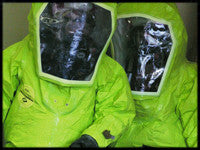Bomb Threat
Although bomb threats are annoying and disruptive, they must be taken seriously. Attempted bombings, bomb threats and anthrax-type scares can cause panic in organizations whose personnel are not prepared to handle such situations. If the response to a threat is mismanaged, the result can be greater disruption of activities and greater hazards to personnel and property. By developing a bomb incident plan, organizations can take charge of the situation and lessen the impact of the threat.
“Bomb Threat” is designed for building management, security officials, crisis management teams, schools, government officials, fire and police, and others who may receive bomb threats or who may respond to bomb threats as a part of their duties. The program explains about the type of locations bombers are most likely to target and outlines a series of steps that building management can take to harden the site against becoming a potential target. Major elements of a bomb incident plan are described, including telephone answering procedures; chain of command; setting up a command center; developing a communications plan; alerting procedures; evacuation procedures; and search procedures.
The program tells what questions should be asked of the threat-maker, and how the call-taker can substantiate the threat and perhaps identify the caller. .The responsibilities of the on-site emergency manager are explained, and the factors that will help the emergency manager decide whether to call for an evacuation. The concepts of coded alerts and low-profile searches are explained. The role of the bomb squad, including equipment used, is detailed, and the roles of police & fire departments are described. Other topics covered include anthrax scares, ‘safe’ locations, recognizing a potential bomb, searching for secondary devices, hazmat teams, and re-occupying the building. The included 28-page Model Procedures Guide will help in the preparation of a bomb incident plan tailored to a specific facility.
Sku: EFG-BombThreat





